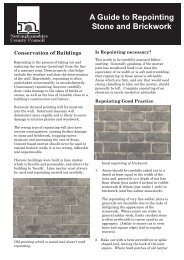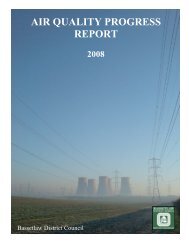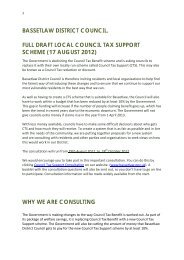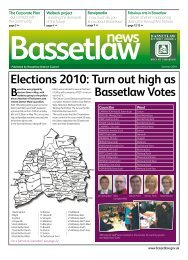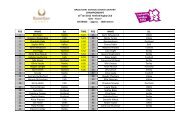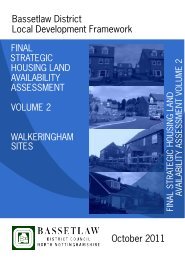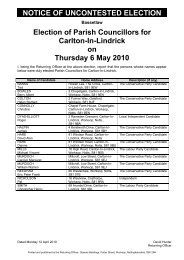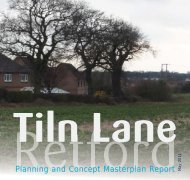Langold Lake Management Plan - Bassetlaw District Council
Langold Lake Management Plan - Bassetlaw District Council
Langold Lake Management Plan - Bassetlaw District Council
Create successful ePaper yourself
Turn your PDF publications into a flip-book with our unique Google optimized e-Paper software.
PART 3: MANAGEMENT DETAILS<br />
3.1 <strong>Management</strong> Projects and Prescriptions<br />
Reference<br />
Number<br />
3.1.1 Fell sycamore<br />
3.1.2<br />
Project Title Prescription<br />
Remove<br />
sycamore<br />
saplings and<br />
seedlings<br />
<strong>Langold</strong> Country Park<br />
• Trees must be checked for potential bat roosts by a suitably<br />
qualified person.<br />
• All felling should take place outside of the bird breeding<br />
season (March to September) unless the work is for Health &<br />
Safety reasons. If felling needs to be undertaken during the<br />
period March to September, the tree subject to felling plus all<br />
other trees and shrubs likely to be affected by the felling<br />
should be checked for nests by a suitably qualified person prior<br />
to work commencing.<br />
• Selectively fell sycamore, concentrating initially on trees<br />
closest to and impeding native species of trees and shrubs<br />
• All felling should be carried out with the aim of reducing the<br />
shade and nutrient competition to native species without<br />
creating large gaps in the canopy.<br />
• A proportion of stems over 30cm diameter should be felled to a<br />
height of 1 – 1.5 metres, the remaining trunk de-limbed and<br />
ring-barked, or stump-treated with Glyphosate.<br />
• All sycamore regrowth should be sprayed with Glyphosate in<br />
the summer following felling<br />
• A proportion of trees felled should be logged (large) and log<br />
piles formed<br />
• Some large felled trunks should be retained when required by<br />
Local Authority to form barriers and path edges to prevent<br />
unwanted access into sensitive areas. These should be placed<br />
directly on the ground and fencing stakes driven into the<br />
ground either side of the trunk at both ends. Heavy gauge<br />
fencing wire should then be stapled to the fence posts, across<br />
the trunk to the opposite fence post and stapled in several<br />
places.<br />
• Use brash to create habitat piles and leave some scattered on<br />
the woodland floor to provide deadwood.<br />
• Visitors should be excluded from felling areas using tape and<br />
warning signs.<br />
• Erect signs informing visitors about work being carried out and<br />
reasons for it.<br />
• Sapling and seedling removal, unless proposed for heavily<br />
shrubbed areas, can be carried out at any time of year.<br />
• Sycamore saplings should be removed by cutting as close to<br />
the ground as possible using loppers or bow saws.<br />
• The resultant small diameter timber should be removed from<br />
site as it is a fire hazard.<br />
• All regrowth should be sprayed with Glyphosate in subsequent<br />
years.<br />
• All sycamore seedlings should be removed by hand by pulling.<br />
This will need to be an ongoing activity throughout the term of<br />
the management plan.<br />
3.1.3 Thin even-aged • Trees must be checked for potential bat roosts by a suitably<br />
Page 22 of 38



